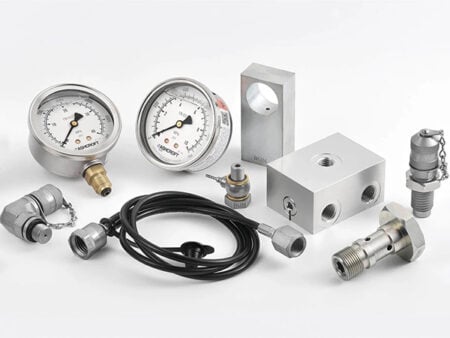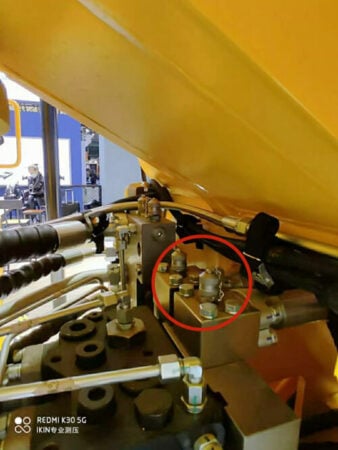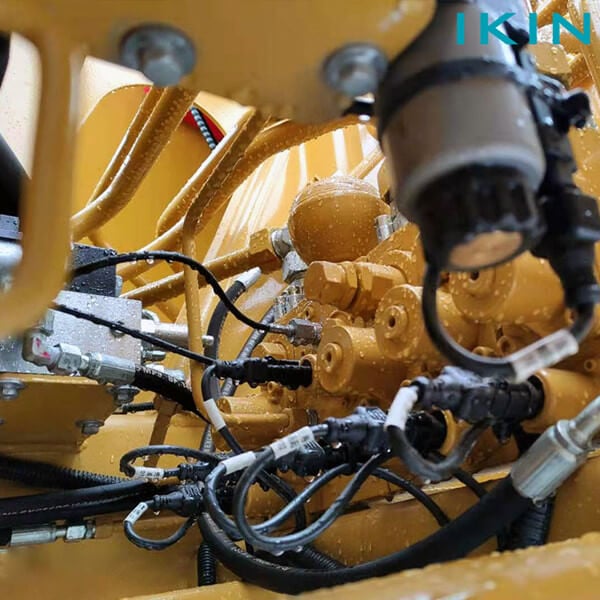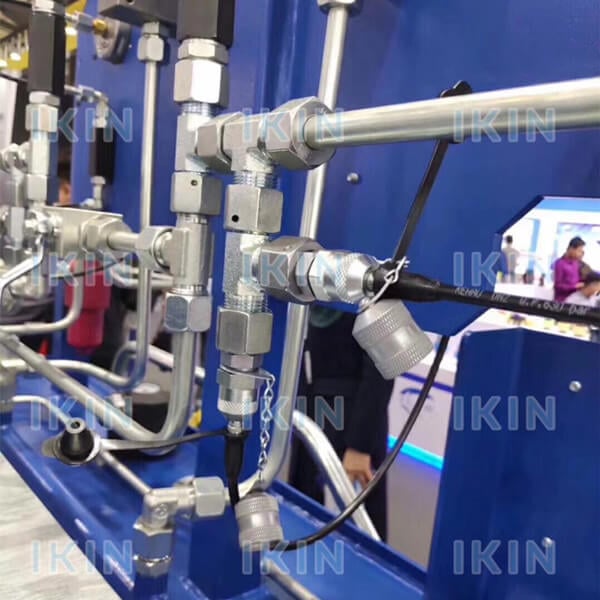Pressure Measuring Fittings in Hydraulic Systems: Types, Applications, and Best Practices
Hydraulic systems are essential in modern industry, playing a crucial role in fields such as construction machinery, industrial equipment, aerospace, and automotive manufacturing.
At the heart of these systems lies the pressure measuring fitting, which is critical for measuring and monitoring system pressure to ensure stability and safety.
In this comprehensive guide, we will explore the various types of pressure measuring fittings, their application scenarios, selection criteria, installation and maintenance procedures, and real-world case studies demonstrating their importance in hydraulic systems.

Pressure measuring fittings come in various designs tailored for specific applications, each with unique features:
1. Quick couplings
·Characteristics: Designed for rapid connection and disconnection.
·Applications: Used in hydraulic systems requiring frequent assembly and disassembly, enhancing efficiency through simple insertion and removal.

2. Threaded joints
·Characteristics: Secured by threaded connections, suitable for high-pressure environments.
·Applications: Common in systems needing robust connections that can withstand high pressure and vibration.
3. Push-in fittings
·Characteristics: Connect via a simple push-in operation.
·Applications: Ideal for low and medium pressure systems, though caution is needed in high-pressure environments.
4. Flanged joints
·Characteristics: Provide high-strength connections.
·Applications: Used in heavy machinery and high-pressure pipelines due to their strong connections and excellent seismic.
5. Welded joints
·Characteristics: Connected by welding, suitable for high-pressure and high-temperature conditions.
·Applications: Preferred in environments demanding high connection strength, despite more complex installation and maintenance.
When selecting a pressure measurement fitting, a number of factors need to be thoroughly evaluated to ensure optimum performance and long-lasting reliability in a particular application. The main factors to consider include the following:
1. Pressure range
According to the working pressure of the hydraulic system, select the coupling that can withstand the corresponding pressure. Over-pressurization can lead to damage to the couplings and even safety accidents.
When choosing, you need to carefully check the maximum working pressure of the hydraulic system and the rated pressure of the pressure measurement joints to ensure that the joints can withstand the working pressure of the system.
2. Temperature range
Hydraulic systems may operate in high or low temperature environments, requiring the selection of fittings with good temperature resistance.
Pressure gauge fittings made of different materials have different performance in different temperature ranges, and you need to choose the right fittings according to the operating temperature of the hydraulic system.
3. Media type
According to the medium used in the hydraulic system (such as oil, water, etc.) to select the appropriate joint material to prevent corrosion and media leakage.
Different media have different requirements for pressure measurement joint materials, such as oil-based hydraulic media suitable for the use of metal joints, while water-based hydraulic media may require the use of corrosion-resistant materials.
4. Connectivity
According to the design and installation requirements of the system to choose the appropriate connection, such as quick couplings, threaded fittings or push-in fittings. The selection needs to take into account the connection method and operating habits of the hydraulic system to ensure that the fitting is easy to install and use.
In order to ensure that the gauge fitting will operate consistently and efficiently in the hydraulic system for a long period of time, proper installation methods and a systematic maintenance program are essential. Below are some detailed recommendations:
1. Installation steps
– Ensure that the hydraulic system is fully pressurized before installation.
– Select the appropriate installation tool according to the type of fitting.
– Ensure that fittings are clean and free of foreign matter where they connect to the system.
– Install the fitting correctly according to the product instructions to ensure a good seal.
– Pressure test after installation to ensure that the joints are leak-free.
2. Maintenance methods
– Regularly check the sealing of the joints and replace the seals when leaks are detected.
– Clean fittings regularly to prevent dust and contaminants from entering the system.
– Regularly lubricate frequently used joints to ensure smooth operation.
– When used under high pressure or in harsh environments, periodically check the fittings for wear and replace damaged fittings in a timely manner.

In the hydraulic system, the pressure measuring fitting is not only widely used, but also plays a vital role. Through the following case studies of several practical applications, we can have a clearer understanding of the key role and significant results of the pressure measurement joints in various industries.
#Construction machinery
A major construction machinery company has introduced a new type of pressure measurement joint in its excavator hydraulic system. Made with high-precision sensors and durable materials, the connector provides excellent measurement accuracy and durability.
By using this pressure fitting, the company monitors the hydraulic system pressure in real time to ensure that the equipment operates within the optimal pressure range, improving efficiency and safety.
In addition, the corrosion and pressure resistance of the couplings significantly reduces maintenance costs, extends service life, and improves overall productivity.

#Oil and gas
In the oil and gas industry, a large oilfield project has adopted a high-pressure and corrosion-resistant pressure measuring fitting to monitor the pressure of high-pressure pipelines. The application of this pressure fitting effectively prevents safety incidents such as pipeline leaks and explosions, and improves the safety and productivity of the project.
Installed at key pipeline nodes, these couplings transmit real-time pressure data to the monitoring center, helping operators adjust system parameters in a timely manner to prevent potential hazards.
#Industrial equipment
An industrial equipment manufacturing company has installed a variety of pressure measurement fittings in its hydraulic presses to monitor the pressure of the equipment’s hydraulic system.
Through accurate pressure monitoring and data analysis, the company identified and resolved potential problems in the hydraulic system and made timely adjustments, significantly improving the equipment’s operational stability and service life.
The real-time data provided by the pressure measurement couplings supports predictive maintenance, reduces equipment failure rates and downtime, and improves overall productivity.

Pressure gauge fittings play a vital role in hydraulic systems, and their proper selection, installation and maintenance are the keys to ensuring the safe and stable operation of hydraulic systems. By understanding the different types of pressure measuring fittings and their application scenarios, and mastering the selection and maintenance methods, the operating efficiency and safety of the hydraulic system can be effectively enhanced.
We hope this article can help you better understand the basics and practical application scenarios of pressure measuring fittings, as well as grasp the key methods of selection and maintenance. We hope this information will be helpful to hydraulic system engineers and technicians in their work to enhance the performance and reliability of hydraulic systems. If you have any questions or need further guidance, please feel free to contact a professional.
